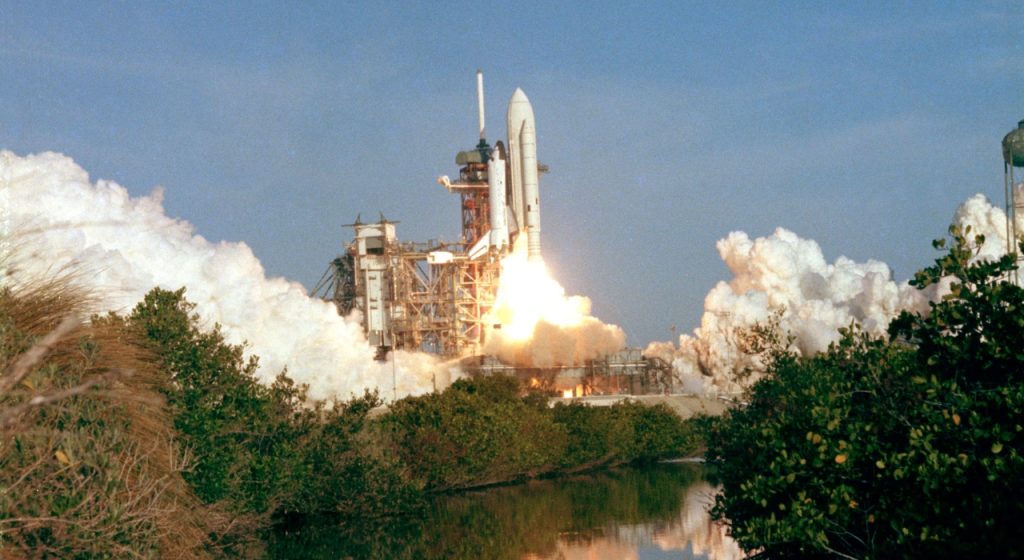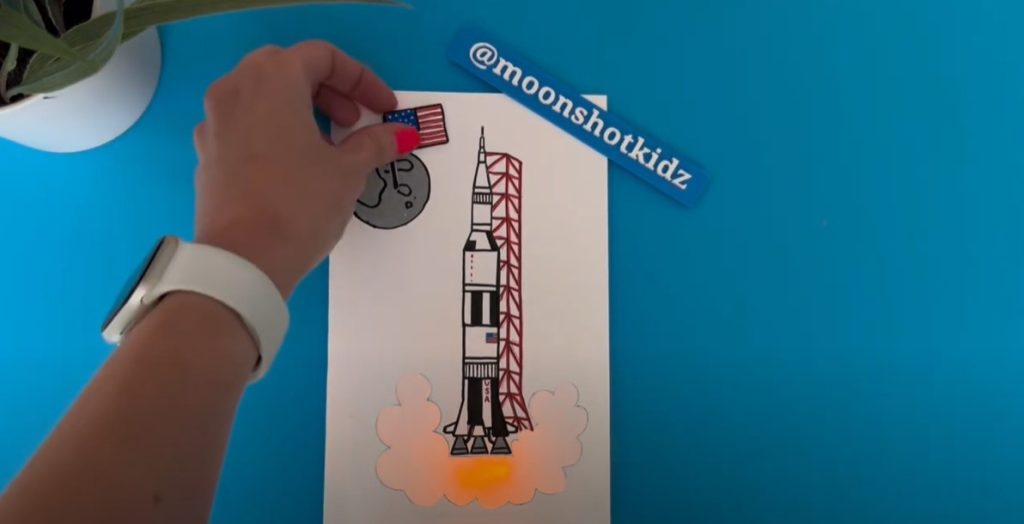How well do you know your astronomical neighborhood? Let’s go on a trip through our solar system and explore the weird, the wild, and the beautiful all around us. Today, we are learning all about Mars.
Where is it?
Mars is the fourth planet of our solar system, sitting 154.8 million miles from the sun and, at its closest, is 33.9 million miles from Earth.
What’s up with the name?

Mars was named by the ancient Romans for their god of war because its reddish color was reminiscent of blood. Other civilizations also named the planet for this attribute – for example, the Egyptians called it “Her Desher,” meaning “the red one.”
Mars is the Roman counterpart to Ares, the Greek god of war. However, the two were viewed very differently culturally. Ares is often seen in myths as a chaotic and villainous force, while Mars was viewed more positively by the Romans. This reflects the two civilizations outlooks on war and violence. Both valued peace, but the Romans recognized military power brought peace, usually through their legions.
Mars is also considered the father of Rome itself, as he is the father of founders of Rome Romulus and Remus. The Roman god’s name also forms the root of the word “martial,” meaning of or appropriate to war.
Who “discovered” it?
Mars is one of the “bright” planets, visible to the naked eye in the sky. It’s also unique in that its brightness varies throughout the year, appearing sometimes as bright as Jupiter and sometimes as dim as a star. Because it’s visible without optical enhancements, Mars was always known.
Much like Venus, the first person to see Mars through a telescope was astronomer Galileo Galilei. He took the first accurate observations of the planet in 1610.

What’s it made of?
The Red Planet is actually many colors. At the surface, we see colors such as brown, gold, and tan. The reason Mars looks reddish is due to oxidization – or rusting – of iron in the rocks, regolith (Martian “soil”), and dust of Mars. This dust gets kicked up into the atmosphere and from a distance makes the planet appear mostly red.
Mars has a dense core at its center between 930 and 1,300 miles (1,500 to 2,100 kilometers) in radius. It’s made of iron, nickel, and sulfur. Surrounding the core is a rocky mantle between 770 and 1,170 miles (1,240 to 1,880 kilometers) thick, and above that, a crust made of iron, magnesium, aluminum, calcium, and potassium. This crust is between 6 and 30 miles (10 to 50 kilometers) deep.
Mars has a thin atmosphere made up mostly of carbon dioxide, argon, nitrogen, and a small amount of oxygen and water vapor.
Can we live there?
Right now? No.
I know, I know. You may have seen the Matt Damon-starring movie The Martian, where his character, astronaut Mark Watney, devises a way to grow potatoes while stranded on Mars in 2035.
The science behind Andy Weir’s novel is solid, but our technology isn’t quite there yet. NASA is working on what a habitat on the Martian or lunar surface will look like. And in both situations, a habitat will absolutely be necessary.
The Martian surface currently doesn’t have enough atmosphere to support life, nor will the extreme temperature changes support it. The temperature on Mars can be as high as 70 degrees Fahrenheit (20 degrees Celsius) or as low as about -225 degrees Fahrenheit (-153 degrees Celsius). And because the atmosphere is so thin, heat from the Sun easily escapes this planet.
If you were to stand on the surface of Mars on the equator at noon, it would feel like spring at your feet (75 degrees Fahrenheit or 24 degrees Celsius) and winter at your head (32 degrees Fahrenheit or 0 degrees Celsius).
So, to survive on Mars, you would need a shelter to regulate those temperature swings and protect from the occasional dust storm. You’d also need to bring something to create and recycle both water and breathable air.
How long is a year there? What about a day?
A Martian day is about the same as an Earth day, taking a little more than 24 hours. But a Martian year is almost twice as long as an Earth year. Mars and Earth may only be 33.9 million miles apart, but since Mars is further away from the Sun, its orbit takes 687 Earth days to complete.
Has NASA sent any missions there?
Mars may be the most-explored object in our solar system (outside of Earth, of course). It’s also the only planet in the solar system inhabited entirely by robots. That fact would make many 50’s science fiction authors, like Ray Bradbury and Isaac Asimov, incredibly happy.
No planet beyond Earth has been studied as intensely as Mars. Recorded observations of Mars date as far back as the era of ancient Egypt over 4,000 years ago, when they charted the planet’s movements in the sky. Today, NASA has a fleet of robotic spacecraft studying Mars from all angles.
Mariner 4
Mariner 3 and 4 were identical spacecraft designed to carry out the first flybys of Mars. Mariner 3 was launched on November 5, 1964, but the shroud encasing the spacecraft atop its rocket failed to open properly, and Mariner 3 did not get to Mars. Three weeks later, on November 28, 1964, Mariner 4 was launched successfully on an eight-month voyage to the red planet.
The spacecraft flew past Mars on July 14, 1965, collecting the first close-up photographs of another planet. The pictures, played back from a small tape recorder over a long period, showed lunar-type impact craters (just beginning to be photographed at close range from the Moon), some of them touched with frost in the chill Martian evening. The Mariner 4 spacecraft was not expected to survive much longer than the eight months to its Mars flyby encounter, but actually lasted about three years in solar orbit, continuing long-term studies of the solar wind environment and making coordinated measurements with Mariner 5, a sister ship launched to Venus in 1967.
Viking 1 & 2
NASA’s Viking Project found a place in history when it became the first U.S. mission to land a spacecraft safely on the surface of Mars and return images of the surface. Two identical spacecraft, each consisting of a lander and an orbiter, were built. Each orbiter-lander pair flew together and entered Mars orbit; the landers then separated and descended to the planet’s surface.
Besides taking photographs and collecting other science data on the Martian surface, the two landers conducted three biology experiments designed to look for possible signs of life. These experiments discovered unexpected and enigmatic chemical activity in the Martian soil, but provided no clear evidence for the presence of living microorganisms in soil near the landing sites.
Pathfinder
Mars Pathfinder was launched December 4, 1996 and landed on Mars’ Ares Vallis on July 4, 1997. It was designed as a technology demonstration of a new way to deliver an instrumented lander and the first-ever robotic rover to the surface of the red planet. Pathfinder not only accomplished this goal but also returned an unprecedented amount of data and outlived its primary design life.
Both the lander and the 23-pound (10.6 kilogram) rover carried instruments for scientific observations and to provide engineering data on the new technologies being demonstrated. Included were scientific instruments to analyze the Martian atmosphere, climate, geology and the composition of its rocks and soil. Mars Pathfinder used an innovative method of directly entering the Martian atmosphere, assisted by a parachute to slow its descent through the thin Martian atmosphere and a giant system of airbags to cushion the impact.



Perseverance and Ingenuity
The Mars 2020 Perseverance Rover mission is part of NASA’s Mars Exploration Program, a long-term effort of robotic exploration of the Red Planet. Perseverance takes the next step by not only seeking signs of habitable conditions on Mars in the ancient past, but also searching for signs of past microbial life itself.
The rover introduces a drill that can collect core samples of the most promising rocks and soils and set them aside in a “cache” on the surface of Mars. A future mission could potentially return these samples to Earth.
Meanwhile, the Mars Helicopter, Ingenuity, is a technology demonstration to test powered, controlled flight on another world for the first time. It hitched a ride to Mars on the Perseverance rover. Once the rover reached a suitable “airfield” location, it released Ingenuity to the surface so it could perform a series of test flights over a 30-Martian-day experimental window.
The helicopter completed its technology demonstration after three successful flights. With its tech demo complete, Ingenuity transitions to a new operations demonstration phase to explore how future rovers and aerial explorers can work together.

What makes it unique?
Multiple things, including the robot facts we just discussed. But what we will highlight here is the biggest volcano in the solar system (that we have discovered so far). Olympus Mons is a shield volcano on the Martian surface.
It was originally discovered in the 19th century and given a closer inspection by Mariner 9 in 1971. Its highest point is 21.9 kilometers, or 13.6 miles, above the Martian surface. That is about eight miles taller than Mount Everest and nine miles taller than the tallest volcano on Earth, Ojos del Salado in the Andes Mountains.
One quirk of Mars geography is that it does not have moving tectonic plates like Earth does. That means a volcano like Olympus Mons will appear over a geothermic hot spot and continue to be over that hot spot for its entire life. Every eruption then builds up the volcano, making it taller and taller over its lifespan.
That also means the base of Olympus Mons is enormous, covering an area as large as France.
Can I see it from here?
Mars is visible to the naked eye in the sky for most of the years. It slides up and down the sky depending on the time of year and your location on the globe. Some years, it is brighter than others, depending on where Earth is in relation to the Martian orbit.
Mars was also one of the first planets to be studied with a telescope. In 1877, Giovanni Schiaparelli, an Italian astronomer, saw what he called “canali.” He was not the first to note Mars’ “canals,” but he was the first to bring them to prominence.
These “canals” do not exist; they are an optical trick due to craters and shadows. They did lead to much speculation about possible life on Mars and inspired books like A Princess of Mars by Edgar Rice Burroughs.
Are there any pretty pictures of it?
Of course! Mars is one of the most photographed planets in our solar system. We even have footage from the planet’s surface. Here’s a gallery of some of the best shots.
[envira-gallery id=”48226″]







